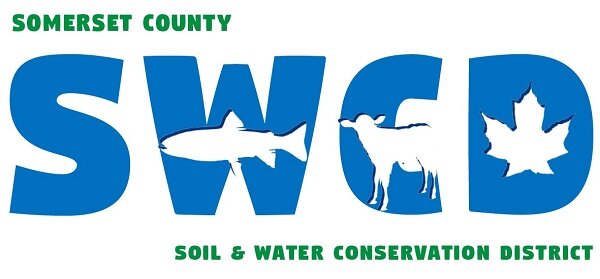Like so many community members right now, I have my children home all the time now due to the COVID-19 pandemic response. After eight weeks, and the arrival of warm weather, it is now a struggle to settle in each day for the work so helpfully provided by our elementary school teachers. So last week when I needed to find and tag ash trees for an Emerald Ash Borer awareness campaign, my children came along. There’s plenty of learning to be done on a woods walk - even math.
The educational tags we put up include an estimated dollar value of all the environmental services each ash tree provides - services like carbon storage, air quality and erosion control. (Learn more at this cool calculator: www.treebenefits.com/calculator/index.cfm) The first step in determining that dollar value is finding the tree’s diameter, specifically DBH, or diameter at breast height (standardized at 4.5 feet off the ground).
How do you calculate diameter? My oldest took the measuring tape and wrapped it around the tree, announcing the tree was 2 feet 4.5 inches around. Great, I said. But that’s circumference. We need diameter, in inches. So now what? He predictably predicted there’s an app for that. There is. Or, you can dig deep for your geometry skills (or look it up) and do the math:
Circumference = π x Diameter
We breezed through the conversion to inches (28.5”), then worked at dividing that by 3.14. And we arrived at a DBH of 9.07, allowing us to easily read the environmental services value in our chart from the Forest Pest Outreach Project ($75). The exercise ended with him uttering a “Cool, are we doing another?” - which is about as much endorsement as one can get at this point in our educational journey.
Measuring the circumference of an ash tree. Note, for accurate DBH, this measurement should be taken a bit higher up the tree, at roughly 4.5 feet off the ground.
When we arrived at the second ash tagging location, he asked for the tape and I handed him what looked like a ruler. In return I got an incredulous roll of the eyes and “Seriously mom.”
But it wasn’t a ruler. It was a Biltmore stick. Developed in the late 1800s for forestry students at the Biltmore Estate, this yardstick-like instrument allows quick estimating of a tree’s dimensions. To use it to measure DBH:
Standing in front of the tree you want to measure, hold the Biltmore Stick straight out, with your knuckles against the tree.
Look to the left side, and move the stick so that the left end of the stick aligns with the tree edge from your view.
Look to the right. Where the right tree edge falls on the stick, use that DBH (or round to closest line). This is your DBH.
Tips: Make sure to keep a straight arm, knuckles touching the tree (fist bump the tree), and keep body in one place (be a tree).
You can also use a Biltmore stick to estimate height, but we didn’t do that this time around. (That means a simple Biltmore stick allows you to estimate the volume of timber in your woodlot. That’s a useful bit of info you can use in calculating timber value or carbon sequestration.) There are some great videos available to walk you through using a Biltmore to measure DBH and height.
Using a Biltmore stick to estimate DBH
No math and super fast. We followed it up with the measuring tape and circumference to diameter calculation and our two numbers were pretty similar. Trying to puzzle through how it works wasn’t such an easy (or successful) lesson, but I at least captured his interest for the afternoon.
Recognizing that not many people have a Biltmore stick lying around, I found instructions to make your own. It doesn’t look too hard and turns a quick lesson in the woods into a more deliberate bit of learning. If you give it a try, please email and let me know how it goes!
— Jennifer, Somerset SWCD Outreach Coordinator



